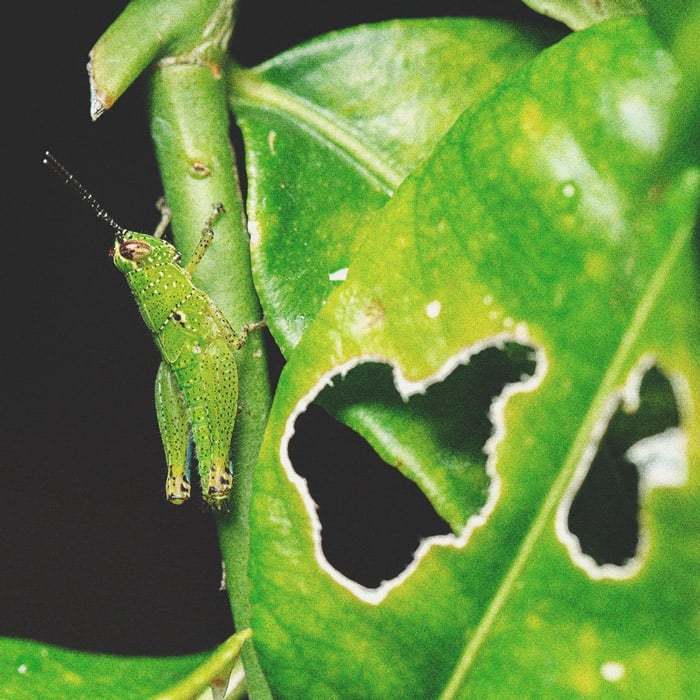
Grasshopper
WHAT IT IS AND HOW TO ELIMINATE
Plantas decorativas de jardín y/o interior
Grasshopper
Grasshopper
Pathogen:
Insect
Type:
Risk to the plant:
CRITICAL
Saltamontes

WHO CAUSES IT?
Grasshoppers are insects of the order Orthoptera and are characterized by their jumping ability, thanks to their long and muscular hind legs. Their robust body and chewing mouthparts allow them to feed on a wide variety of vegetation. Females lay their eggs on the ground, generally in sunny areas with loose soil. These eggs remain dormant during the winter and hatch with rising temperatures in spring. The nymphs emerge and go through several molts until they reach the adult phase, a process that can last weeks or months, depending on the species and environmental conditions. During the juvenile stages, they do not have wings and move around by walking or jumping, actively feeding. Once they reach adulthood, they can move long distances and form swarms when ecological conditions are favorable. These massive migrations drastically increase their destructive capacity on crops and green areas. Some species, such as lobsters, can change their behavior from solitary to gregarious, multiplying their invasive and harmful potential.
SYMPTOMS
In Plants, grasshoppers cause physical disease by direct destruction of plant tissue. Its chewing action drastically reduces leaf biomass, decreases photosynthetic capacity, and weakens the plant against other threats. In high density situations, they can devour leaves, flowers, tender stems and even fruits, affecting the production and commercial value of the crop. Intense feeding pressure can also lead to complete defoliation and death of young plants.
- Irregular perforations in leaves and stems
- Chewed edges and partial loss of foliage
- Premature fall of flowers and fruits due to mechanical damage
- Visible presence of adults and nymphs in the aerial parts
- Weakened plants, with stopped or stunted growth
- Severe defoliation in tender shoots or seedlings
- Scars and bites on fruits


DEVELOPMENT CONDITIONS
Temperature:
25 °C – 35 °C
Humidity:
30 % – 60 %
HOW IS IT SPREAD?
Natural migration, Movement of winged adults, Transport of agricultural machinery, Transport of forage or plant material, Wind, Infested neighboring land
HOW TO ELIMINATE IT?
Home treatments
Natural allies
There are no natural allies
Chemical treatments
RECOMMENDED PRODUCTS TO ELIMINATE THE PEST
REPELLENT PLANTS
-
RECOMMENDATIONS
- Check your plants frequently, especially in hot weather.
- Remove the grasshoppers by hand if there are few of them.
- Use mesh or physical barriers to protect small crops.
- Plant flowers or herbs that repel them, such as calendula or basil.
- Apply an infusion of wormwood, chili or chilli
- Avoid leaving weeds or very tall grass around the garden.
- If the problem persists, you can use natural insecticides, such as those containing neem, following the instructions carefully.














